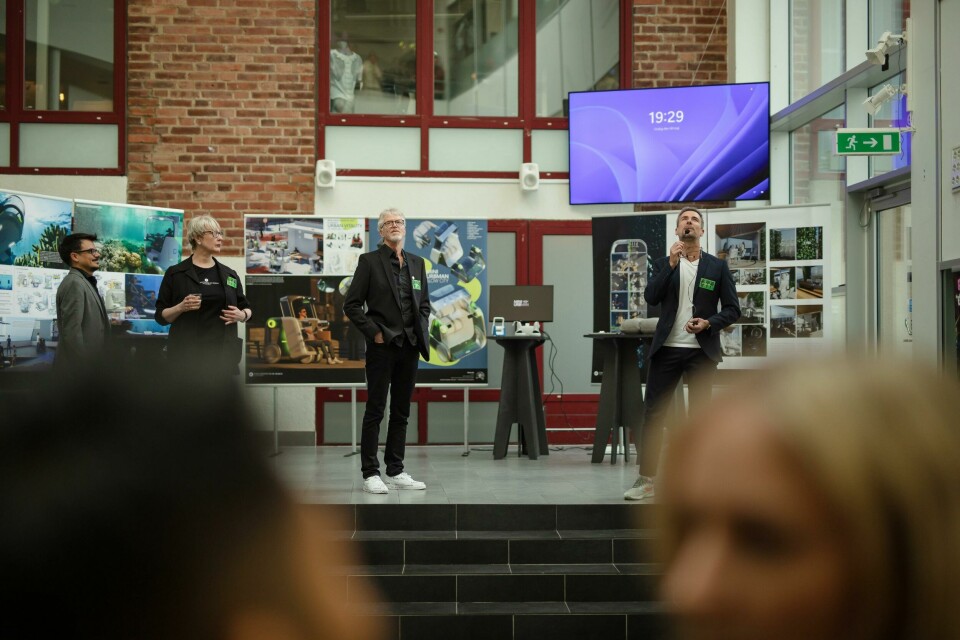
Umeå course leaders on nurturing talent and creating storytellers
CDN recently sat down with Demian Horst, head of the Umeå Institute of Design and Alessandro Argenio, head of the school’s Transportation Design course
Design schools are where the next generation of creatives learn new skills and hone existing talents in the pursuit of a career at an OEM, supplier, consultancy or perhaps their own independent studio. The Umeå Institute of Design in Sweden frequently ranks as one of the most popular destinations, and in 2021 claimed top spot in the Red Dot Ranking for a record sixth consecutive year.
Demian Horst is the head of the Umeå Institute of Design and over the last six months or so has been teeing up Alessandro Argenio to take over the Transportation Design course which Horst once led. At this year’s degree show held on site at the Institute’s quaint riverside campus, CDN caught up with both academics to learn more about its approach to design education and why students flock here from around the world.
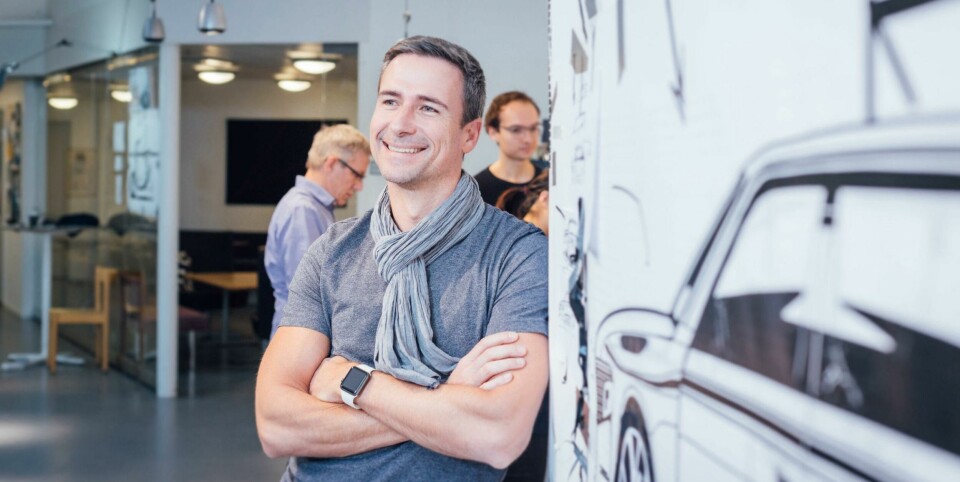
Car Design News: Tucked away in northern Sweden, Umeå is an unexpected place to find one of the world’s top design schools. How has Umeå got to where it is now?
Demian Horst: That has in fact been a part of its success story, but there are so many other elements. It is a relatively young design school compared to those we are usually ranking with; we were founded in 1989 and the masters degree was only curated in 1996. So it’s only the last 10-15 years that have really propelled us forward and meant we can be quite selective during the recruitment process.
Students that apply here often say “I saw this show, I saw this project, how do I do that?”
But generally speaking, the attraction of the school is its infrastructure and the students that come here are very motivated; they know this is what they want to do and they are not here to play around. Students joke that there’s nothing to do here in the city, but even if there was I think they would still be here. They mix fun and work very much and have access to a lot of support and nice spaces.
Alessandro Argenio: You end up being more communal here, it’s effectively a tight-knit group of designers and academics. Students want to come here because they end up being highly motivated, committed to the work and their peers.
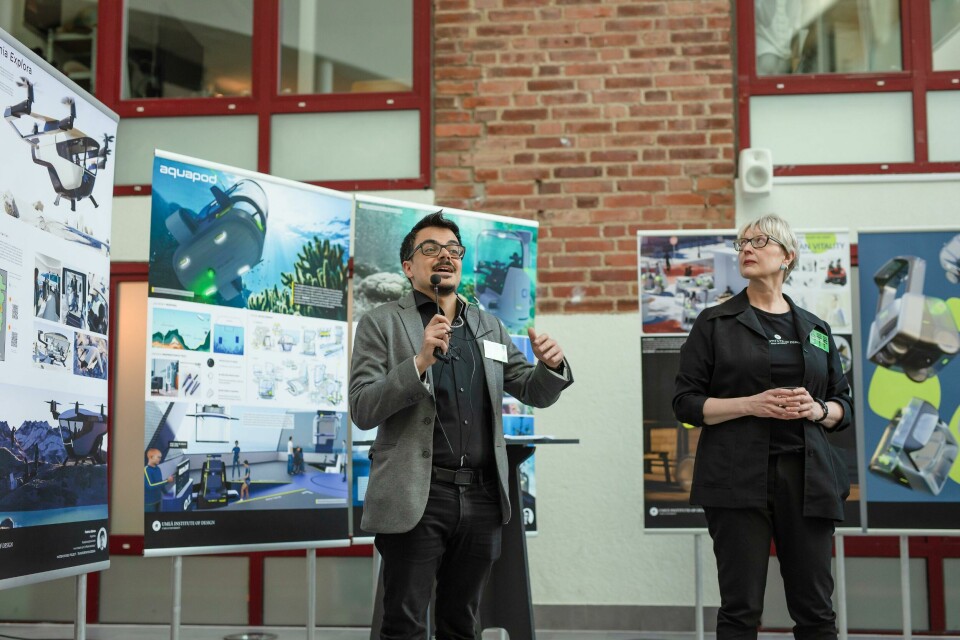
CDN: It might be tight knit once you’re here but I understand it’s quite an exclusive school to get into. How many students are on the transportation design course this year?
DH: There will be eight graduating this year; it would have been a group of ten but two other students completed their projects during the year. It’s a very selective group and that’s another element of why we get so much attention.
We want them to be progressive and futuristic but also realistic
CDN: What else does Umeå have to offer that other schools might not?
DH: What I hear from the students that apply here is that families trust this is a safe place to be. This school has been able to rank quite highly in the Chinese reference ranking system in particular. Crime is low and there are good living conditions. Living costs are also comparably cheaper compared to a capital city. From the students, it is often a case of word of mouth – we have a repuation that attracts talent. Graduation projects are always mentioned too – “I saw this show, I saw this project, how do I do that?”
CDN: What is your approach to the Transportation Design course?
DH: Besides this reason for ‘being’ – which needs to be strongly established with each project, to motivate why certain design developments should exist – we try to ensure that students take their projects all the way. They must take care of the foundations of basic ergonomics and accessibility and that people understand how it would function in the real world. We want them to be progressive and futuristic but also realistic.
AA: The tools that are available have evolved, and that makes it much faster and easier for them to try things out. Before software like Blender came out it would have been quite frustrating for students to play around with sketches and digital models, and then there is Unreal Engine which creates realistic environments and reflections, for example. A design studio five years ago might have paid five figures to get the same result you can get from a laptop today.
Part of our formula at Umeå is to have students pursue internships
DH: There is something of a hidden philosphoy here too: the whole school was grounded on user-centered design, so connecting ‘experience’ with ‘mobility’ has always been at the heart of the programme. We spend a lot of time understanding what it means for people using the vehicle, what the story is behind it and being able to communicate that. Students do this several times during the course, always speaking in public and trying to explain their thoughts.We are not just creating designers here, we are creating storytellers as well.
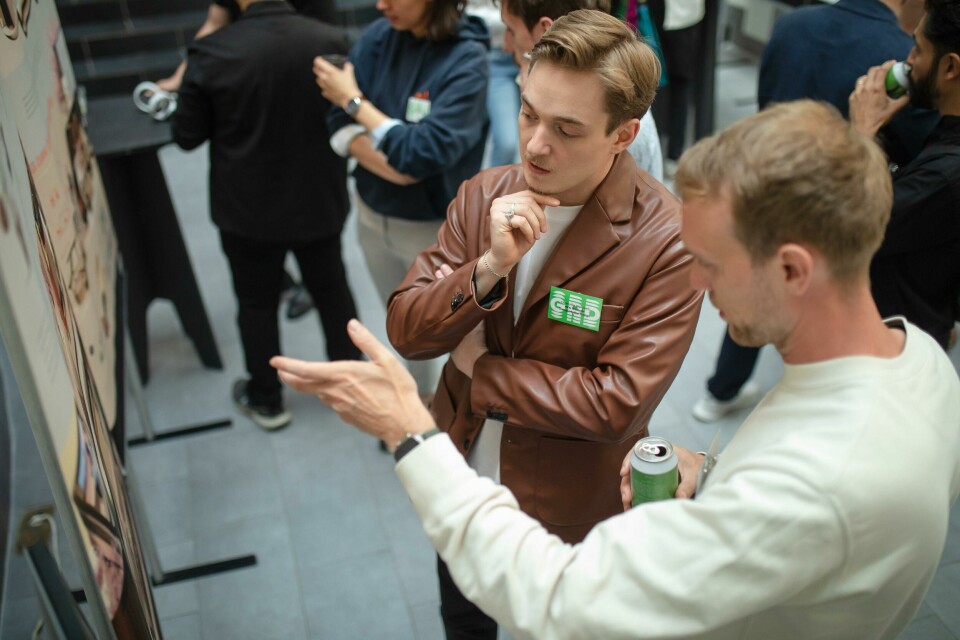
CDN: Speaking of which, some schools might be well known for producing exterior or interior designers. Is there a particular trend in terms of where graduates end up after leaving Umeå?
DH: The surprise of recent times is user experience, physical interface design and the number of people landing those kinds of jobs.
AA: Strategic design, too, as many OEMs are opening up their own strategic design departments nowadays.
It takes time to build relationships and understand the expectations of the academic space
CDN: From speaking to your students, many of them seem to have already landed jobs even while studying. That must be quite satisfying for you both to see?
DH: It’s another part of our formula at Umeå to have students pursue internships. We encourage them to go out and take a gap. There are two ways to engage with internships during the masters programme – part of your studies, effectively a third term in the two year masters where you are placed somewhere and report back with your impressions and learnings. But the majority interrupt studies formally and then we guarantee them a place back here, and they return a year later. That means they can do two internships over the course of that gap, and oftentimes their final projects are guided by those internships.
CDN: How long have you both been with Umea now?
DH: As a student after my bachelors degree in Brazil, and after working a couple of years in commercial vehicle design, in 2001 I found Umeå as an interesting destination for a masters. I never expected to stay on and teach, it just happened. There was a period where I graduated and went to Germany to work for Opel and General Motors and then was invited to come back and run the programme in 2009, which I did for 13 years. It’s been two years since I moved from being officially in charge of the Transportation Design programme, but I’ve never disconnected from it.
CDN: Indeed – because Ale, you’re the programme director of the transportation design course now.
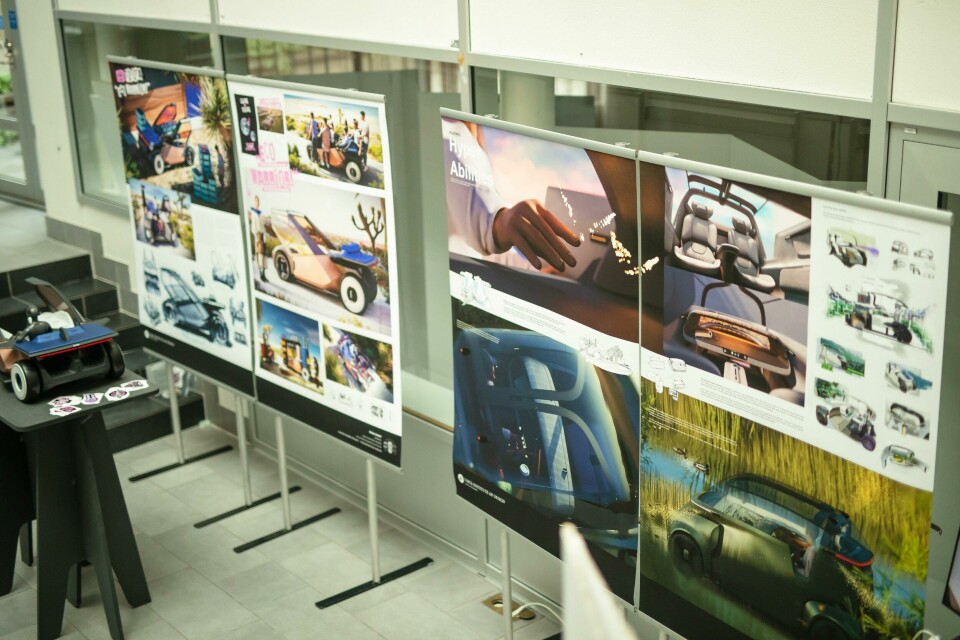
AA: That’s right, there’s been a switch. It’s happening at this moment. A colleague had to move on so Demian stepped in to help out for a while, but we’ve been transitioning that role over to me gradually.
DH: I said to Ale that I didn’t want to scare him with the full level of responsibility when he came on, but it’s his baby now.
AA: The beautiful thing is that from January until now it’s been a little bit more added month to month. It takes time to build those relationships with students and staff and understanding the expectations of the academic space. There are rules and regulations that need to be documented in a certain way, and we are recruiting people that do not necessarily have those skills or knowledge. I’m really enoying the challenge and it’s quite the privilege.
























